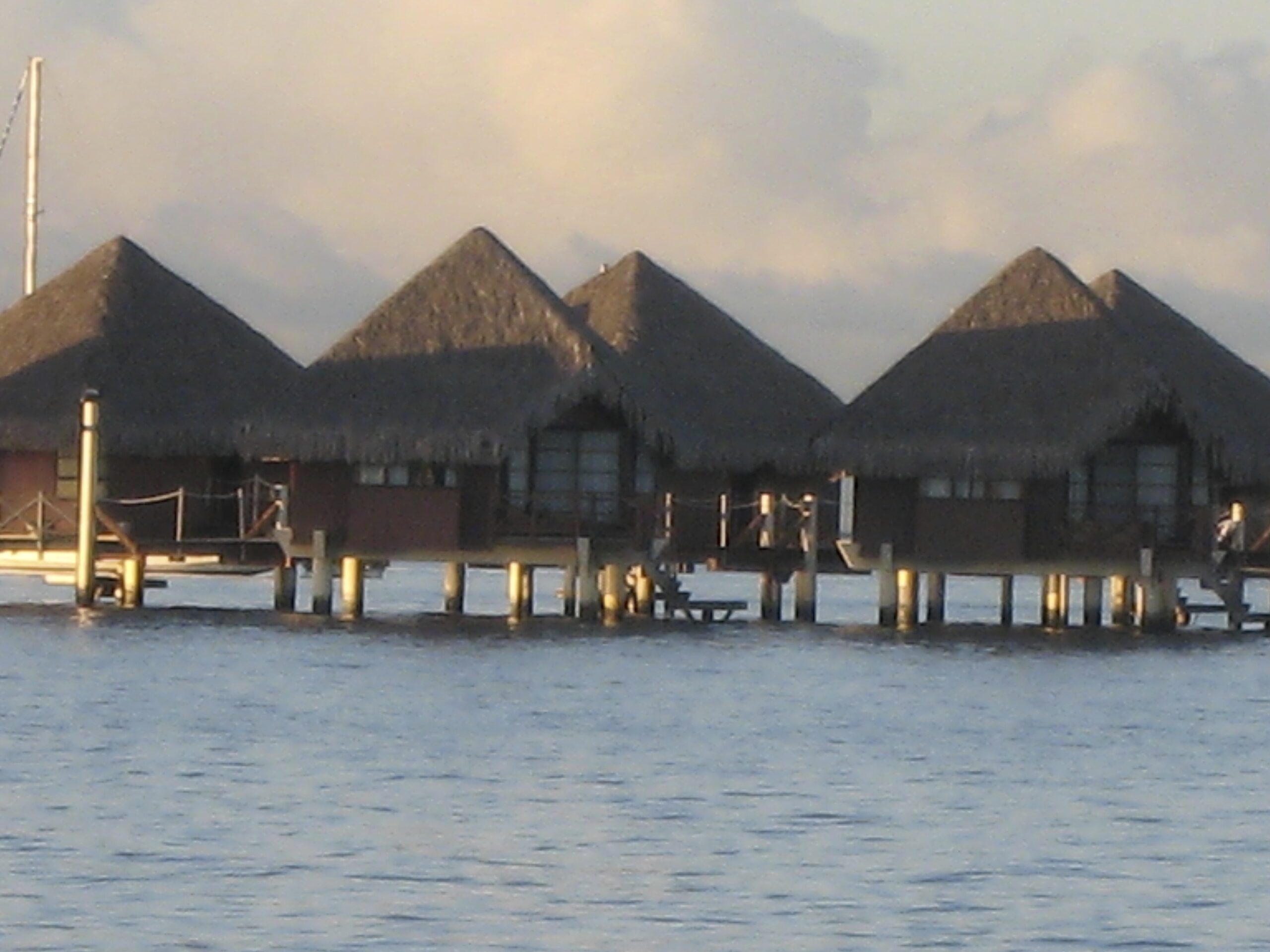I amble through the untidy streets of Papeete wondering what happened to the blissful postcard image of the capital of French Polynesia. The lush canopy of the jungle in the distance and the teeming marine life suggest that paradisical islands such as Tahiti have their dilemmas.
Something About Tahiti
After a seven-hour flight from Los Angeles to Tahiti’s Faa’a Airport and a couple of nights in Papeete, we embark on the—then—m/s Paul Gaugin for a cruise among one of the five archipelagos in French Polynesia.
The Society Islands of the South Pacific—Tahiti, Moorea, and Bora Bora, to name only the famous ones—constitute one of only a few recreational pristine aquatic ecosystems in the world.
Seventy percent of French Polynesians call Tahiti Island home, and most live in bustling Papeete. In sharp contrast is the less-traveled Raiatea Island, a UNESCO World Heritage Site. After water activities and lazy times on a motu (islet), next is an inland tour of Uturoa, Raiatea’s capital. A ride in a 4-WD vehicle and a boat trip were the occasions to learn about island life.
Pondering Raiatea’s Past and Present
In Opoa, on the eastern side of the island, our dashing guide—who embodies Tahitian romanticism—introduces us to the ancient history at the ruins of a temple. “Raiatea is in the middle of a triangle,” he says as he draws one in the sand. “The three points are Easter Island, Hawaii, and New Zealand; Raiatea is in the middle.”
Raiatea was called the Sacred Island and Taputapuatea Marea (temple) The Eye of the Eagle. Such names might have had a purpose: to discourage three potential invaders. Now an archeological site, the temple was Polynesia’s cultural, political, and religious center. Dedicated to the god of war, it was another deterrent until James Cook’s arrival and colonization.
Common sense should indicate that it’s not the place for a picnic. It’s a sacred site for Eastern Polynesians who gathered for celebrations such as children’s rites of passage: tattoos and circumcision for boys and a tattoo on each buttock as a symbol of fertility for girls. I cringe at the sacrifices of animals and war prisoners that took place here. Besides, if none were available, offerers hunted forest dwellers instead. It beats any doubt that change can be a good thing.
Living on Raiatea Island
On the way to our 4-WD vehicle, our guide darts to a bush only to brandish a land crab that he thrusts at us. He likely did this umpteenth times but still laughs at our reaction; a familiarity that leads to personal questions about his life as a Tahitian.
A descendant of Polynesian royalty, Manuia Dean is—surprise!—American by his Californian mother, herself the daughter of an Iroquois by the name of Levahyela, a lineage he is still trying to reconnect with. His grandfather was the mayor who arrested Paul Gauguin, he says, adding that Tahitians remember the painter not so much for his paintings and more about his deviant morality, but it’s another story.
We drive in a thick forest, the type that covers over 40 percent of French Polynesia. Trees and underbrush often give way to family gardens. The government lends these plots at a symbolic cost to locals who don’t own land. Here and there, red ginger flowers brighten the jungle. Empty coconut shells lay not under palm trees, but under vanilla vines—to protect the roots from the sun. Vanilla comes from an orchid bean pod and is one of the main crops in the Society Islands, as are pineapple and coconut.
On the drive back to the pier, I notice newly built facilities: a vocational center where unskilled adults can learn a trade, a daycare, a temple, and a Mormon church. With 4,000 inhabitants, Uturoa is the second economic center of Polynesia, thanks to imports from New Zealand and redistribution among the islands.
Most islanders work for the French government, others at the commercial, cruising, and yachting ports, or in deep sea fishing and tourism. “We need more jobs, but there is no budget for development because France sends all the money to Papeete,” Guide Manuia Dean complains. As a parent, I understand why he’d want his university daughter to have opportunities locally instead of settling in Papeete.
Facts of Life from the Faaroa River
It’s time to join Captain Maurice for a boating tour on the Faaroa River, the only navigable one in Polynesia. From the water, the perspective on the forest leads to asking him questions. His way of life focuses more on Raiatea than Tahiti as one of France’s overseas territories.
He points to a high valley on the mountain, where he lives on 200 hectares and grows food for his four wives and 20 children, he says. He has no official title to the land he received from his late mother. And he complains about UNESCO. His sister sold seven acres to buy a new car and a 60-square-foot so-called house. I take this information with a grain of salt but ponder his statement, “One could be left with nothing if one trades land for something that won’t last forever.”
On the mountainside, smoke rises from burning empty coconut shells before they fill with water and mosquito larvae. We then pass by a new housing development, where “Europeans and Chinese owners come once a year with lots of luggage and do nothing but swim, then the house sits empty.” Captain Maurice shakes his head in frustration.
The boat slows down at the mouth of the river as we come upon kayaks with fellow cruisers paddling in the calm waters. We then navigate through the rainforest. Dogs of monochromatic colors—the result of inbreeding—guard houses. As for the pigs and chickens, they know nothing else but free-range life.
Back on the cruise ship, I reconcile the diverging viewpoints of our tour guides. The younger one has a mixed heritage and a more progressive view of the future. The other holds on to his indigenous lifestyle and wisdom. Meanwhile, developing or not developing Raiatea remains a dream and a dilemma.
Previously published 2014 – Buckettripper.com
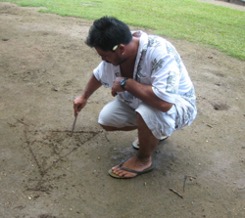
(Photo: MCArnott)
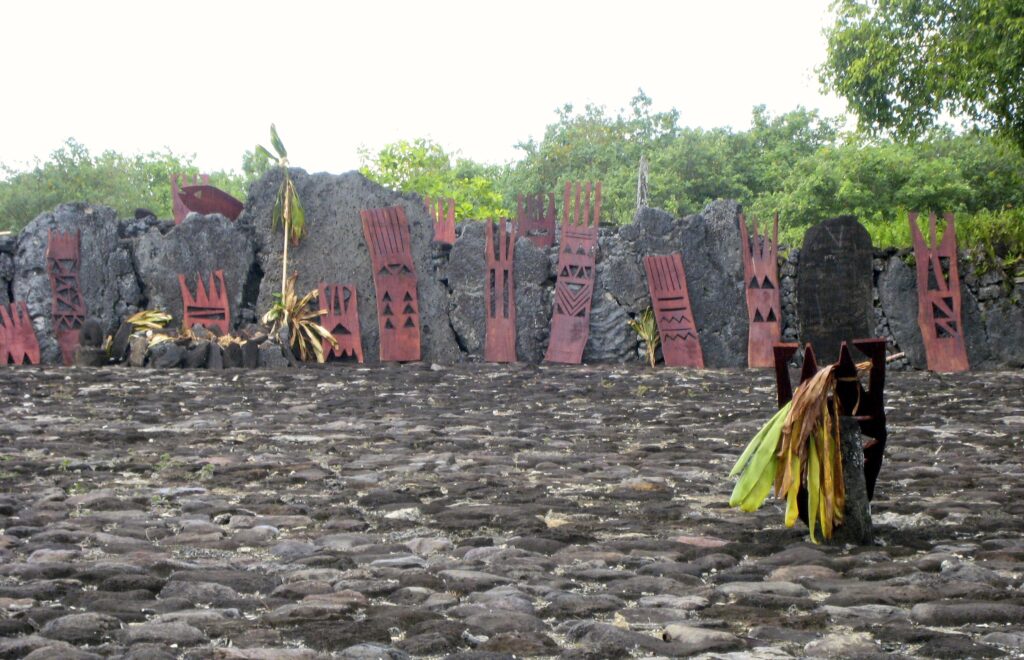

(Photo: MCArnott)
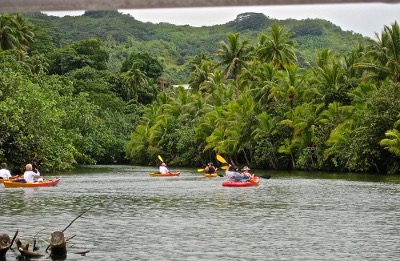
(Photo: MCArnott)
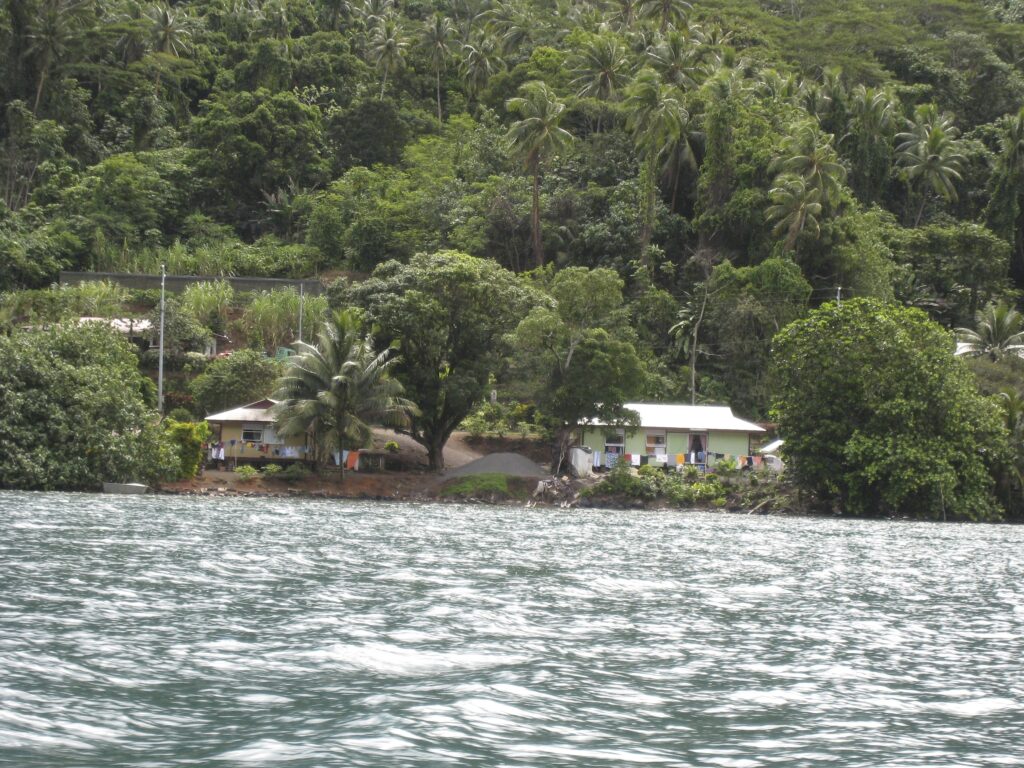
(Photo: MCArnott)


